Maillot vert masters
Introduced by the Tour organizers in 1953 to reward riders who had no hope of winning the race...
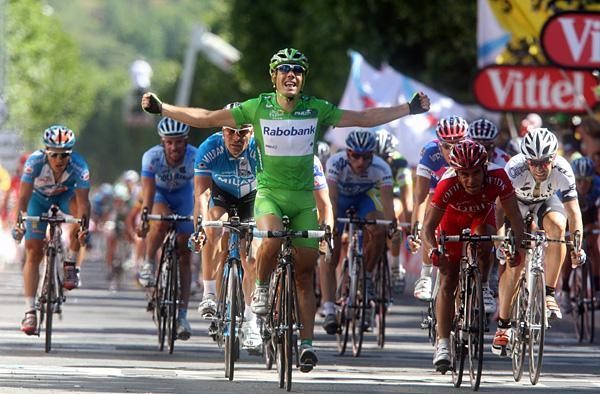
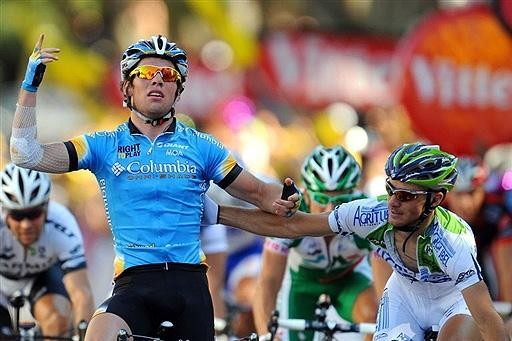
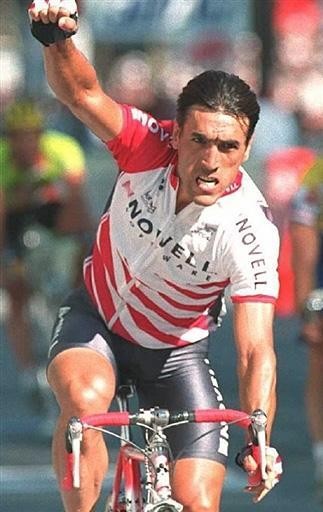
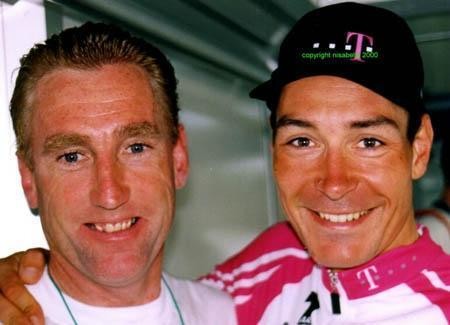
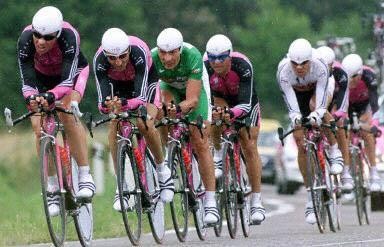
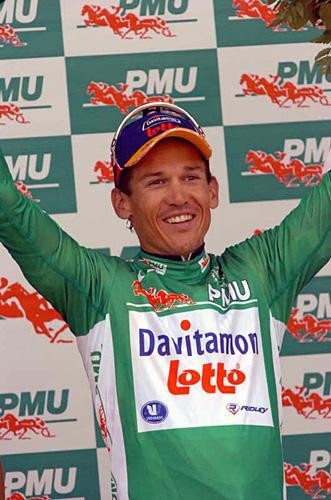
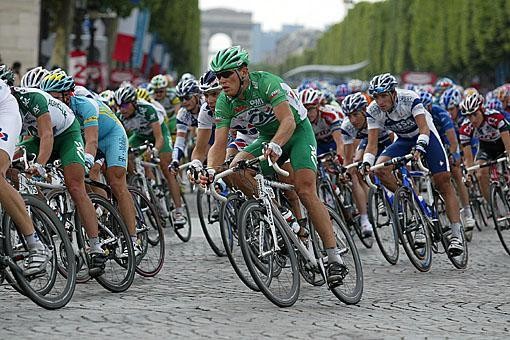

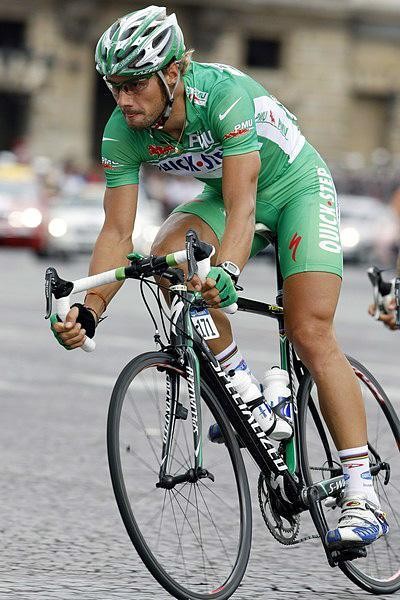






Tales from the peloton, July 27, 2008
As the Tour de France winds down today, there's still one more battle to be played out on the Champs-Elysées. While the sport's great sprinters ready for their final showdown in Paris, Stefan Rogers remembers some of the great battles for the maillot vert.
Introduced by the Tour organizers in 1953 to reward riders who had no hope of winning the race overall, the maillot vert, or sprinter's jersey, is the most sought after jersey that isn't yellow. The points are awarded along the route as well as at the finish of each stage. Typically thought of as a sprinter's competition, the winner must not only be a fast finisher, but a consistent one.
Oscar Freire's (Rabobank) likely victory in the Tour de France sprint competition today is a well-deserved prize for the Spanish rider. No one can doubt the quality of a rider who has equaled the great Eddy Merckx, with no less than three World Championship titles on the road. But Freire might well be the first to tell you that he wasn't the fastest sprinter in this year's Tour. That honour would have to go to Mark Cavendish (Team Columbia), who was simply untouchable once he saw the finish line.
But in spite of his four stage wins, Cavendish learned that perhaps the most difficult challenge for sprinters in the Tour is making it to Paris. Whether it's dragging those huge sprinter's muscles over the high mountains, or simply the fatigue of a three-week race covering more than 3,500 kilometres, the battle for the green jersey has usually been as much about who could finish as they have been about who's the fastest sprinter. Over the past 20 years, there have been a number of competitions that highlight the complex drama of trying to crown the Tour's best sprinter.
1988: The name Planckaert has been a famous one in cycling for decades, so it was fitting that younger brother Eddy won the green jersey in 1988, 22 years after his brother Willy had won his. Eddy Planckaert managed to win the green jersey despite never placing higher than third in any of the stages. In fact, Jean-Paul van Poppel - who now manages women's Team Flexpoint - was clearly the fastest sprinter in the race, taking four stages including the finale in Paris.
But van Poppel, who had won the green jersey competition the previous year, suffered the fate of many great sprinters: he couldn't climb. While the Dutchman was bringing up the rear on the more difficult days of the race, Planckaert was able to grab a few points here and there. Planckaert's closest competition actually came from American Davis Phinney, who finished second, and Sean Kelly who finished in third.
Get The Leadout Newsletter
The latest race content, interviews, features, reviews and expert buying guides, direct to your inbox!
1989: Perhaps somewhat overshadowed by Greg LeMond's improbable victory over Laurent Fignon, the 1989 Tour's points competition was dominated by Kelly, who won his forth and final green jersey. While he began his career as a sprinter, Kelly developed into one of the sport's greatest riders as he compiled a list of wins that included multiple Classics as well as stages races.
An excellent time trialist as well as a climber, Kelly was able to score points on virtually any terrain. Proving perhaps better than anyone else that consistency is the key to the green jersey, Kelly won the 1989 competition in spite of not winning a single stage.
1990: Olaf Ludwig and Johan Museeuw, two of the most feared finishers of their era, fought it out on the roads of France for the green jersey in 1990. While Museeuw won two stages to Ludwig's one, the German managed enough high placing during the race to take his only green jersey. In the final sprint in Paris, Museeuw won, but Ludwig edged out a powerful new professional named Djamolidine Abdoujaparov to take third and enough points to secure the maillot vert.
1991: Abdoujaparov's first green jersey win came in just his second year at the Tour. But Uzbekistan's most famous bike rider learned just how tough finishing the Tour can be. Possessing one of the most explosive sprints in the business, he also had one of the most erratic, which gave 'The Tashkent Terror' his nickname.
Having won two stages early in the race, Abdoujaparov was eager to punctuate his points victory with a win in Paris. However, as if to solidify his reputation, Abdoujaparov rode straight into a barrier in the final sprint, crashing spectacularly on the Champs-Elysées just metres away from the finish. Because the rules of the Tour require that a rider finish the race to take his prize, Abdoujaparov was helped back on his bike, and crossed the line, unofficially the slowest finisher to win the maillot vert.
1994: Having won the points competition in 1992, Laurent Jalabert looked like a good bet to earn his second title in 1994. But his Tour only lasted one stage, coming to an unexpected and painful end in the streets of Armentières. As the bunch flew down the final few metres to the finish, Belgian sprinter Wilfried Nelissen was making his final burst to the line. With his head down, Nelissen slammed into a policeman who was unbelievably snapping a picture of the race.
The resulting crash was horrendous, sending Nelissen and Jalabert to the hospital and out of the Tour. Thankfully and perhaps ironically, Abdoujaparov, who ended up winning the stage as well as taking home the green jersey, had nothing to do with the massive pile-up that eliminated two of his strongest challengers.
1997: Eric Zabel had some help in winning his second points competition from some unlikely sources: his competitors. Belgian sprinter Tom Steels was a perennial challenger for the green jersey in the '90s, a period when the Tour sprints had become increasingly treacherous events. The sixth stage featured another crazy sprint for the finish, and Steels finally let his temper get the better of him.
In the mayhem, Steels was so incensed at being cut off by fellow sprinter Frédéric Moncassin, he threw a water bottle at him, earning himself as early trip back home. Not content to let the Belgian steal all the headlines, it was revealed that Abdoujaparov had failed a doping test on Stage 2, and he was also sent away, leaving the spoils for Zabel once more.
2001: One of the best point competitions ever came down to a few centimetres on the Champs-Elysées. Stuart O'Grady had worn the maillot vert for most of the race, and he led Zabel by two points as the peloton rode into Paris. While it was Jan Svorada who took the victory, Zabel's second place just ahead of O'Grady gave him 10 more points than the Australian, and his sixth points competition jersey. Perhaps it was fitting that Zabel, who practically made a career out of second place finishes, would take home his last green jersey thanks to coming across the line in that position.
2005: Certainly Lance Armstrong's seventh straight Tour victory goes down as the story of 2005. But the competition for the Tour's best sprinter was a great story as well with three top sprinters - Thor Hushovd, Stuart O'Grady, and Robbie McEwen - all riding into Paris with at least a mathematical chance of winning the title. Another man might have figured in to the equation, but early points leader Tom Boonen had one fall too many, and he abandoned the Tour after the 11th stage. That left the green jersey to Hushovd, who held it through the mountains to the final day.
In Paris, Alexandre Vinokourov took the glory on the Champs-Elysées, and even though both O'Grady and McEwen finished ahead of Hushovd, his seventh place earned him enough points to stay ahead of his rivals.
2006: Wearing the yellow jersey he had won in the prologue, Hushovd had a scare when he was accidentally cut by one of the thousands of giant green hands that had been given out to the crowds before the finish. The scene was surreal as the group crossed the line led by Jimmy Casper, and then suddenly Hushovd was on the ground covered in blood. Fortunately it looked much worse than it was, and he was able to continue.
The green jersey passed from Casper to McEwen, then to Boonen, and by Stage 4, back to McEwen. By the time McEwen won Stage 6, his third, he was in the lead of the competition with Boonen, Freire, and Daniele Bennati still in the hunt. But Boonen would again abandon the race, this time on road to the Alpe d'Huez, leaving no one who could realistically keep McEwen from winning his third sprint title.
2007: Robbie McEwen's 12th stage win in a Tour de France was perhaps the most improbable. Crashing hard just 20 km before the finish of the first stage from Canterbury to London, McEwen looked hurt and completely out of sorts. But somehow he managed to pull himself back to the front of the bunch just in time for the charge to the line and stun the world by taking the win.
After such a feat, McEwen seemed like a good bet to win his fourth sprint competition, but his reign lasted only one day. Boonen took the green jersey off of Robbie's back the very next day by a single point. McEwen's injuries ultimately took their toll on him, and he was out of the Tour after finishing outside of the time limit on the eighth stage. Boonen, who won two Stages 6 and 12, never lost green for the rest of the race, although another Robbie - Robbie Hunter - and six-time sprint king Zabel, chased him all the way to Paris.
The name Zabel is still synonymous with sprinting in the Tour de France. The German rider dominated the sprint competition for six straight years between 1996 and 2001. During that span he chalked up nine stage wins, but he actually managed to win the competition without any stage wins in 1998 and 1999. Zabel possessed perhaps the most important key to winning the competition - consistency. Not only did he place high in the sprints day after day, he could also earn points on many of the more difficult days when his rivals were forcing themselves just to stay within the time limit.
No discussion of sprinters can be complete without including Mario Cipollini, perhaps the greatest sprinter to never win the maillot vert. As fast as he was, Super Mario never finished the Tour de France. In fact he only wore the green jersey during the Tour for two days, four days fewer than he wore the yellow jersey.
From 1993 to 1999 Cipollini electrified the early days of the race winning 12 stages, including an amazing four in a row in 1999. But he was known for his flamboyance as much as his skill. His choice of clothing often drew more attention, and he was also perhaps the most fined rider ever in the Tour. Cipollini made no secret of his distaste for the mountains, and unfortunately his Tours never lasted too much beyond the first hard day in the hills.